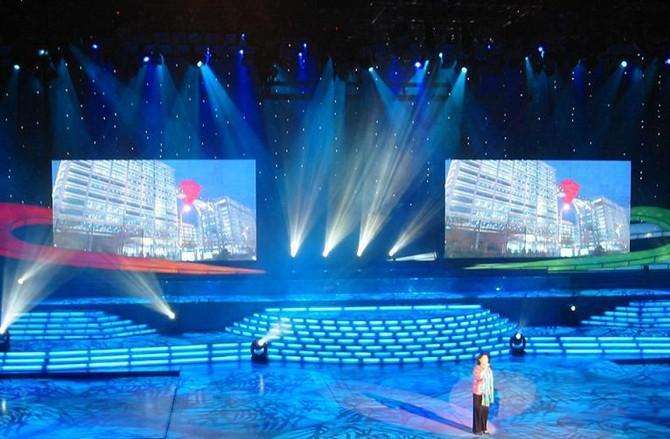LED electronic large screen belongs to electronic products, sometimes there are all kinds of faults. According to the led display manufacturer experience, we summed up five major faults and solutions of LED display screen.
1、 Why is the whole screen not bright or dark on the unit board?
1. Visually check whether the power connection line, 26p cable between unit boards and power module indicator are normal.
2. Use a multimeter to measure whether the unit board has normal voltage, and then measure whether the voltage output of the power module is normal. If not, it is judged that the power module is broken.

3. Measure the low voltage of the power module, and adjust the fine adjustment (the fine adjustment near the indicator light of the power module) to make the voltage reach the standard.
2、 What is the reason why the LED electronic screen appears completely black?
In the process of using the control system, we occasionally encounter the phenomenon that the LED electronic screen appears completely black. The same phenomenon may be caused by various reasons, even the process of screen blackening may vary with different operations or environments. For example, it may turn black at the moment of power on, during loading, or after sending, etc
1. Make sure that all hardware, including the control system, is properly powered on. (5V, do not connect reversely or wrongly)
2. Check whether the serial port cable used to connect the controller is loose or falling off. (if it turns black during the loading process, it is probably caused by this reason, that is, the communication line is loose during the communication process, so the screen turns black. Do not think that the screen body is not moving, and the line cannot be loose. Please check it manually, which is very important to solve the problem quickly. )
3. Check whether the LED screen and the hub distribution board connected with the main control card are closely connected and inserted reversely.
3、 What are the reasons for the failure to load or communicate?
The reasons for communication failure and loading failure are basically the same, which may be caused by the following reasons. Please compare the listed items and operations:
1. Make sure the control system hardware is properly powered up. ( 5V)
2. Check and confirm that the serial port line used to connect the controller is a straight line, not a cross line.
3. Check and confirm that the serial port connecting line is intact and there is no looseness or falling off at both ends.
4. Select the right product model, right transmission mode, right serial port number and correct serial transmission rate by comparing the LED electronic screen control software and the control card you choose, and set the address and serial transmission rate on the hardware of the control system correctly by comparing the dial switch diagram provided in the software.
5. Check whether the jumper cap is loose or falling off; if the jumper cap is not loose, make sure the direction of the jumper cap is correct.
6. If the loading fails after the above check and correction, please use a multimeter to measure whether the serial port of the connected computer or control system hardware is damaged, so as to confirm whether it should be returned to the computer manufacturer or the control system hardware for testing.
4、 The reason why the LED screen appears bright line for a few seconds when it is powered on or the screen picture becomes blurred?
After the screen controller is properly connected with the computer, hub distribution board and screen, 5V power supply shall be provided for the controller to make it work normally (at this time, do not directly connect with 220V voltage). At the moment of power on, there will be a few seconds of bright line or “splash screen” on the screen, which is a normal test phenomenon, reminding the user that the screen is about to start normal operation. Within 2 seconds, the phenomenon will be eliminated automatically and the screen will enter normal working state.
5、 What do you mean by automatic or manual brightness adjustment?
Brightness adjustment refers to the adjustment between the darkest and brightest display on the screen, rather than the light-sensitive adjustment. Automatic brightness adjustment is based on the different brightness that should appear in different periods of time, and is automatically adjusted to a predetermined brightness by the wide LED screen control system. Manual brightness adjustment refers to the operation of the LED screen control system by the end user to make the LED electronic screen reach a specified brightness